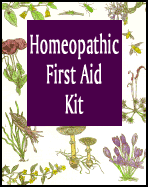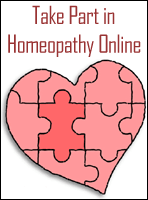Homeopathy is the system of treatment based on demonstrable laws and principles, which are -
a) The Law of Similars - It is also called the Law of Cure. This law demonstrates that the selected remedy is able to produce a range of symptoms in a healthy person similar to that observed in the patient, thus leading to the principle of Similia Similibus Curentur i.e. let likes be treated by likes. To give a simple example the effects of peeling an onion are very similar to the symptoms of acute cold. The remedy prepared from the red onion, Allium cepa, is used to treat the type of cold in which the symptoms resemble those we get from peeling onion. The principle has been verified by millions of Homeopaths all over the world.
b) The Law of Single Remedy - This law directs to choose and administer such a single remedy, which is most similar to the symptom complex of the sick person at a time.
c) The Law of Minimum Dose - The similar remedy selected for a sick should be prescribed in minimum dose, so that when administered there is no toxic effects on the body. It just acts as a triggering and catalytic agent to stimulate and strengthen the existing defense mechanism of the body. It does not need to be repeated frequently.
Holistic as well as Individualistic approach in Medicine through Homeopathy:
This is a key point and unique to Homeopathy. Even though it may sound strange, Homeopathy does not treat disease per se. A Homeopath does not concentrate his therapy on, say arthritis or bronchitis or cancer. In other words he does not limit his treatment to painful joints, inflamed bronchi or a malignant growth. Rather, he treats all aspects mental, emotional and physical of the person who happens to be suffering with arthritis or bronchitis or cancer. Homeopathy regards each patient as a unique individual, e.g. six persons with hepatitis might get a different Homeopathic remedy, each one aimed at the individual's totality of symptoms rather than at his liver alone. The physicians' interest is not only to alleviate the patients' present symptoms but also his long-term well being.
Concept of Vital Force
Dr. Hahnemann discovered that the human body is endowed with a force that reacts against the inimical forces, which produce disease. It becomes deranged during illness and the best-selected Homeopathic remedies stimulate this failing vital force so that, as Hahnemann said "it can again take the reins and conduct the system on way to health".
Concept of Miasm
Psora, Syphilis and Sycosis are the three fundamental causes of all chronic diseases that afflict the human race as discovered by Dr. Hahnemann and called them miasms. This word is derived from Greek word miainein meaning 'to pollute'.
Syphilis and Sycosis are the venereal and contagious chronic diseases, whereas Psora is a non-venereal chronic disease. Psora is present from the beginning to end of life and is the root cause of most of the diseases.
Principle of Drug Proving
To apply drugs for therapeutic use, their curative powers should be known. The proving of the drug is the method employed to know these powers and is unique to Homeopathy as they are proved on healthy human beings. The symptoms thus known are the true record of the curative properties of a drug or the pathogenesis of a drug.
Drug Dynamisation or Potentisation
Drugs are prepared in such a way that they retain maximum medicinal powers without producing any toxic action on the body. It was found experimentally by Dr. Hahnemann that when diluted drugs are powerfully succussed they develop lasting medicinal powers. |


